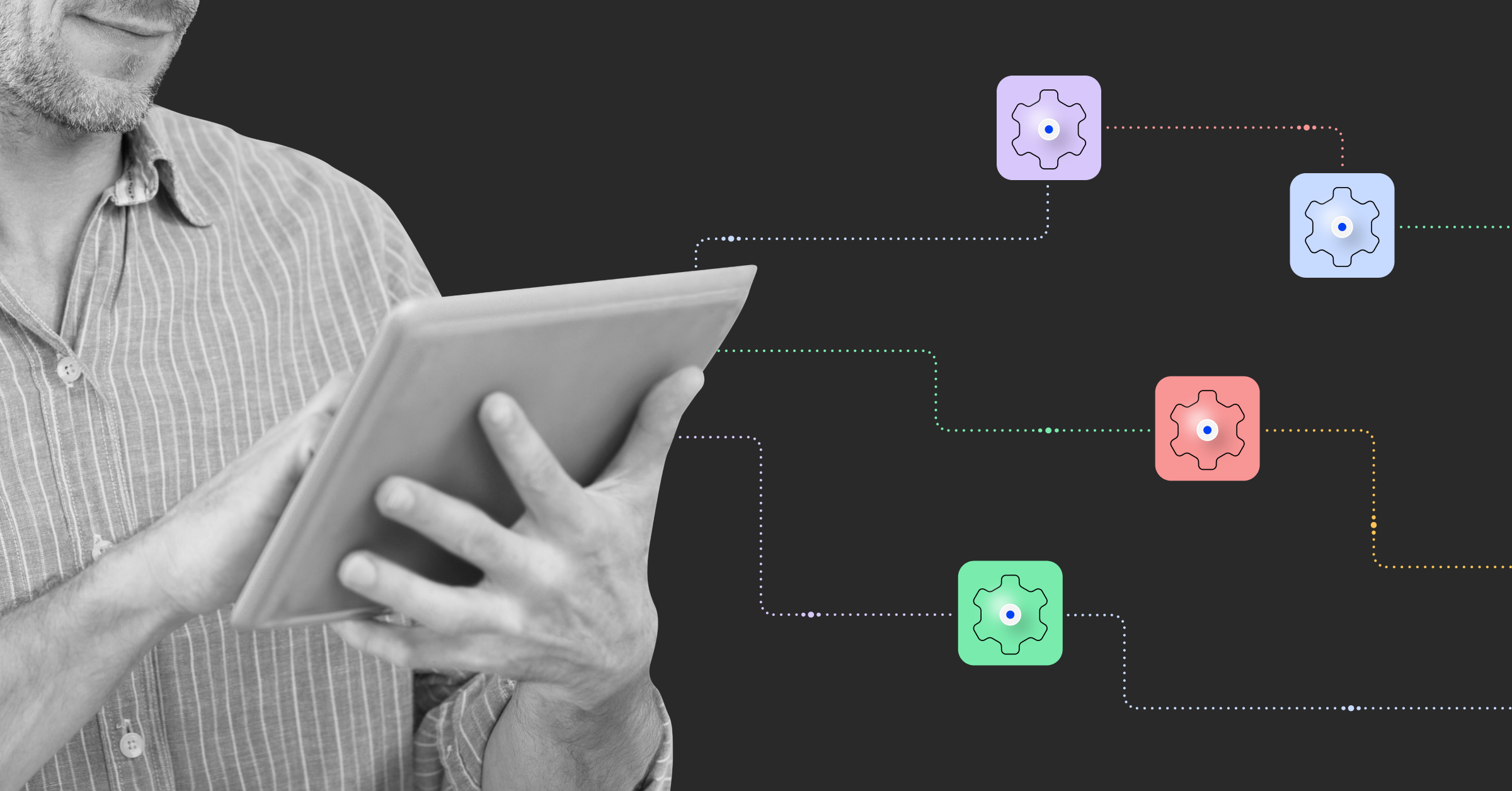1
What is MTTD?
Have you ever wondered how efficiently your IT team detects incidents? Mean time to detect (MTTD) is a key performance indicator (KPI) that measures your IT team’s productivity during the first stage of incident resolution and reveals opportunities for improvement.
By lowering MTTD, ITOps and DevOps teams can:
- Identify issues more quickly
- Minimize potential downtime
- Maintain system reliability
MTTD is the average time elapsed between the start of an incident and the moment an organization identifies an issue, also known as mean time to identify (MTTI) or defined as mean time to discover.
As an incident-management KPI, MTTD plays a crucial role in shaping incident-management strategies. The time to detection is part of the total time to resolution. Keeping this time low ensures better experiences, lower risk, and better availability.
Maintaining low MTTD is critical for all IT teams because it allows them to address potential incidents before they impact end users.
2
What’s the difference between MTTD and MTTR?
MTTD refers to the average time spent identifying an issue or outage in IT systems, revealing the efficiency of monitoring and alerting processes.
In contrast, mean time to resolve (MTTR) measures how long it takes to address the issue and restore operations. You may see other definitions for the R in the term, including recover, remediate, repair, and restore. Each has a slightly different definition, but the main message behind all variations the time it takes to fix the issue.
Other important metrics are:
- Mean time to failure: MTTF indicates the expected lifespan of non-repairable items like hardware. It’s relevant in DevOps discussions concerning on-premises hardware.
- Mean time between failures: MTBF is similar to MTTF but for repairable items. It signifies the average duration between failures for a component.
3
How do you calculate MTTD?
You can determine MTTD mathematically using the following formula:
MTTD = (sum of incident detection times) ÷ (# of incidents)
The table below shows five unique incidents for Organization A in a month, complete with their initiation and detection times.
In this example, the total detection time is 198 minutes for 5 incidents. Applying the above formula, Organization A’s MTTD for May was 39.6 minutes.
In this example, the total detection time is 198 minutes for 5 incidents. Applying the above formula, Organization A’s MTTD for May was 39.6 minutes.
4
Why is a low MTTD necessary for incident management?
Evaluating and improving MTTD can assist in gauging your organization’s incident management effectiveness, including logging and monitoring strategies. A low MTTD signals strong incident management. Conversely, if the MTTD is high, incidents are not detected quickly, leading to delayed discovery and escalation.
5
What’s a good MTTD?
Aim to keep your MTTD as low as possible. A lower MTTD means you’re discovering and solving problems quickly. Actual times depend on your organization, your software, and incident types. The ideal MTTD target is zero, meaning you’re proactively identifying issues before they escalate to incidents.
Addressing issues swiftly prevents them from becoming larger incidents. A quick response is more cost-effective than waiting for an outage to start. Longer detection times lead to longer downtime, affecting availability and resulting in unhappy customers.
6
What factors can influence MTTD in incident response?
Tools and environmental factors that can influence MTTD include:
Tools
- Monitoring: Effective, comprehensive monitoring solutions can quickly identify anomalies and deviations from normal behavior, reducing MTTD.
- Alerting systems: Prompt, accurate alerts enable teams to detect incidents swiftly and initiate response procedures promptly.
- Detection thresholds: Optimizing detection thresholds to balance between false positives and false negatives is crucial for minimizing MTTD.
- Data correlation: Advanced correlation techniques help identify patterns and anomalies more efficiently, reducing MTTD.
Environmental factors
- Environment complexity: Highly complex systems may require more time to detect and pinpoint issues than simpler environments.
- System visibility: Comprehensive visibility enables quicker incident detection, while inadequate visibility can prolong detection times.
- Data volume and velocity: High data volumes or rapid data streams can make it challenging to detect incidents promptly.
- Automation: Automated monitoring and detection processes can identify incidents faster than manual methods.
- Historical data analysis: Analyzing previous, similar incident data for patterns and trends aids in early incident detection.
7
Best practices to lower MTTD
When it comes to cutting MTTD, adopting smart practices is the name of the game. Here’s a rundown of some proven best practices tailored for ITOps teams:
- Create a clear incident response process. It’s unrealistic to expect your IT team to improvise during a crisis. What you need is a well-defined, meticulously documented incident management process. Make it accessible and keep it updated, eliminating guesswork.
- Embrace monitoring and observability. Establish a comprehensive monitoring system to deliver a holistic view of IT infrastructure health and enable early anomaly detection or potential issues.
- Leverage AIOps: Automate event analysis, identify patterns and correlations, and automate incident response to keep MTTD at a minimum, fostering optimal operational efficiency.
- Prioritize ongoing training: The influx of insights from monitoring tools requires a thorough understanding from your ITOps team. Invest in continuous training to provide them with the expertise to manage the complexities of IT incidents. This will enable them to extract crucial information from monitoring tools, preventing service disruptions and outages.
- Implement blameless post-mortems after IT incidents: View every incident as a learning opportunity. Instead of assigning fault, conduct blameless post-mortems to uncover the root causes, take preventive measures, and find opportunities for earlier detection. The emphasis is on process improvement so teams can focus on preventing the issue or, at least, detecting it and fixing it sooner.
- Drive continuous improvement for preemptive action: Introduce continuous improvement programs to address potential pitfalls proactively. Analyze and enhance processes regularly to identify trends and areas for refinement. Tracking MTTD over time allows you to spot trends and trigger investigations. If MTTD is on the rise, dig into the reasons—did detection time increase, or did more incidents occur?
8
Reduce mean time to detect with AIOps
MTTD isn’t just an important KPI on a dashboard; it’s a diagnostic tool that helps you pinpoint the root causes of issues, streamline your response processes, and optimize the overall reliability of your IT systems.
AIOps uses advanced AI and machine learning (ML) technologies to transform IT operations, improving and adding critical context to analytics and enabling automation to reduce MTTD. AIOps plays a pivotal role in lowering MTTD by automatically and reliably revealing key incident analysis, incident impact, and probable root cause.
To expedite incident identification, AIOps can help companies’ L1 teams maintain high system availability. When integrated with your business’s unique topology and other data, it can supply meaningful insights faster than a human can.
“Centralizing our operations with AIOps and BigPanda allowed us to have a much earlier MTTD, which gave us a head start to resolve operational incidents,” says Alvin Smith, Vice President of Global Infrastructure and Operations at InterContinental Hotels Group (IHG)
9
Speed detection and improve incident management
BigPanda AIOps delivers AI-driven insights and automation that empower IT teams to identify and address incidents promptly while cultivating a proactive approach to IT operations management.
- Single pane of glass: BigPanda provides ITOps teams with a unified single pane of glass for seamless incident management. This intuitive real-time interface enables teams to observe and investigate incidents, assess their impact, identify root causes, and collaboratively streamline resolution.
- Automate root cause analysis: AI/ML correlates alerts across your hybrid cloud deployments with change, topology, and available CMDB data to build actionable and contextually rich incidents in real time. BigPanda AI automatically identifies the causes of IT incidents and suggests how to resolve them in real time.
- Improve coordination and workflows: BigPanda enables efficient incident sharing and escalation through seamless integration with ticketing, notification, and chat tools to keep your teams and management tools up to date and working together.
Learn more about how BigPanda transforms incident management by offering a smooth and cohesive experience for enhanced visibility, uptime, and resolution capabilities.




